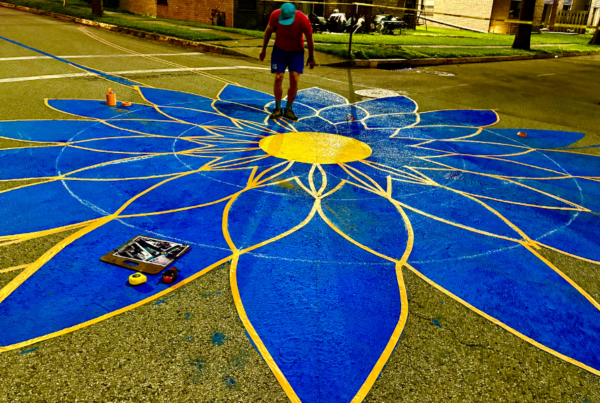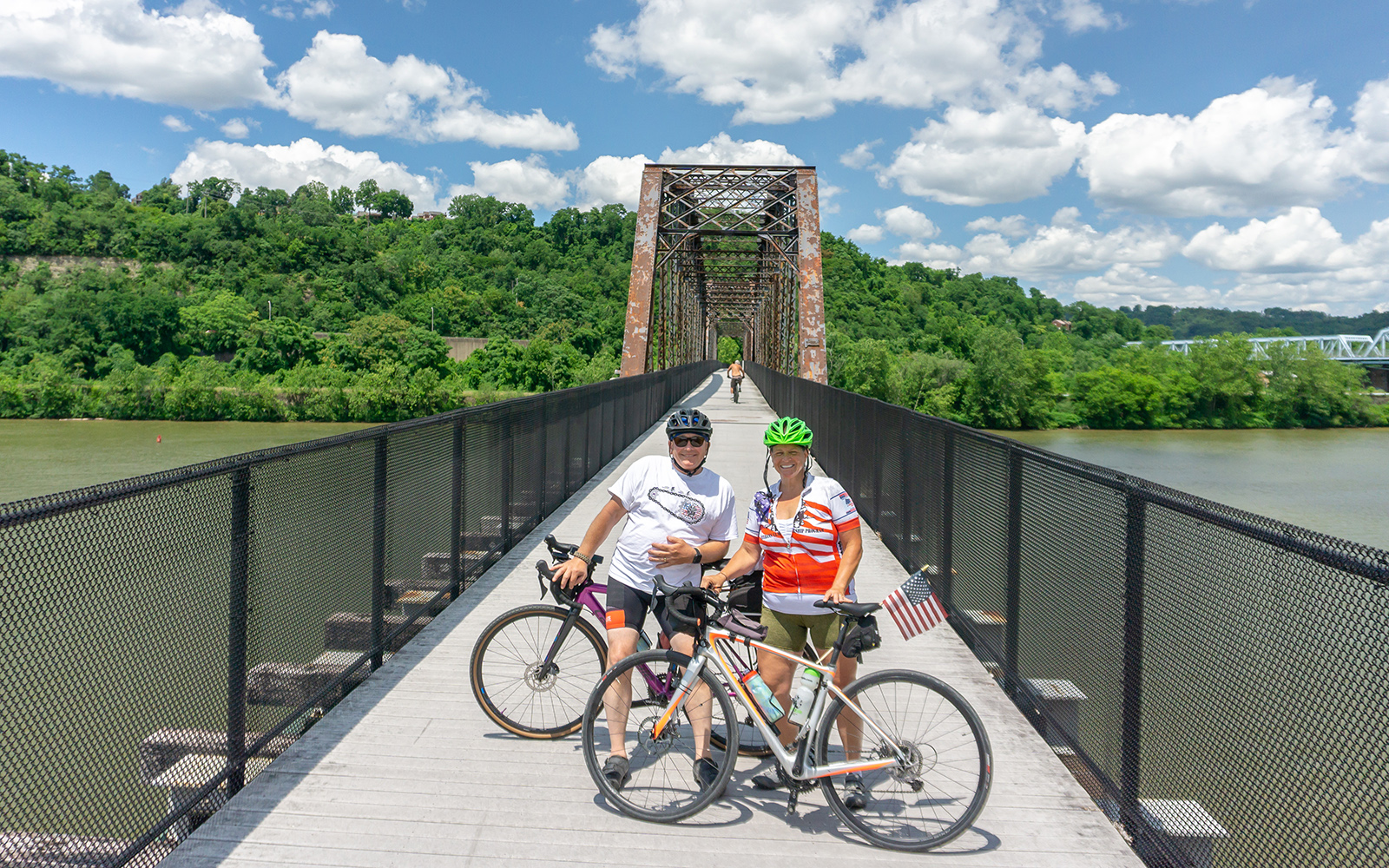
Summary
In this conversation with Gita Michulka, Bryan Perry shares how the Great Allegheny Passage Conservancy's storytelling project is capturing first-person narratives that highlight the very people who make the trail the destination that it is. Using photo and video posts in the style of “Humans of New York,” it shares all the things that make the trail truely special.
A ride on the Riverton Bridge with the Veterns Leadership Project.
Community Spotlight—Great Allegheny Passage Conservancy
The Community Spotlight series features the efforts Rivers of Steel’s partner organizations, along with collaborative partnerships, that reflect the diversity and vibrancy of the communities within the Rivers of Steel National Heritage Area.
By Gita Michulka, Contributing Writer
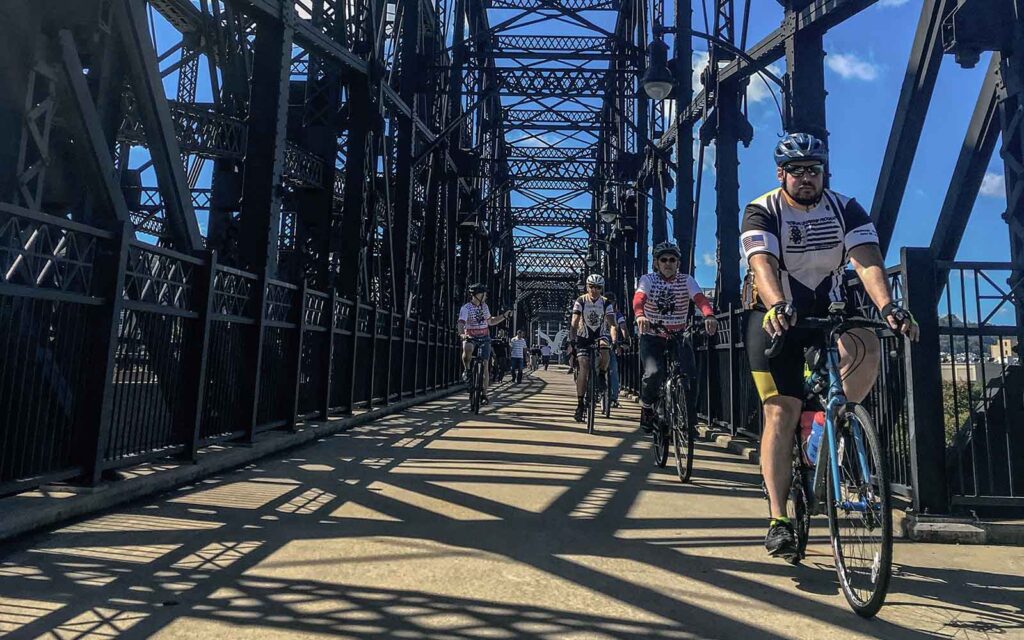
Riders on the Hot Metal Bridge.
Great Allegheny Passage’s People of the Trail
The name “Humans of New York” might already be taken, but “People of the Great Allegheny Passage” has a nice ring to it.
Utilizing the power of a good story, the Great Allegheny Passage (GAP) Conservancy hopes to highlight the essence of the trail towns along the GAP in a way that draws the attention of locals and tourists alike and shines a light on the living history of our region.
“This beautiful trail, the Great Allegheny Passage, took thirty-five years to build. But moreover, it has been built and maintained by local hands, and it is local entrepreneurs and risk takers who have started businesses in the trail towns along the way—folks who are tied to the land and have a deep appreciation for the history of the landscape through which the GAP runs,” says Bryan Perry, executive director of the Great Allegheny Passage Conservancy.
“I want our audiences, especially folks new to the GAP—tourists, out of towners, folks who are really just coming to have a great bicycle adventure—to get to know the people who have built this trail, who have put down a stake in the health of its towns, those who are protecting natural areas, and those who are preserving and interpreting the region’s history. There are so many wonderful stories to tell, and this project will begin to tell just a few of the diverse stories of folks who’ve been committed to the land and its features for such a long time.”
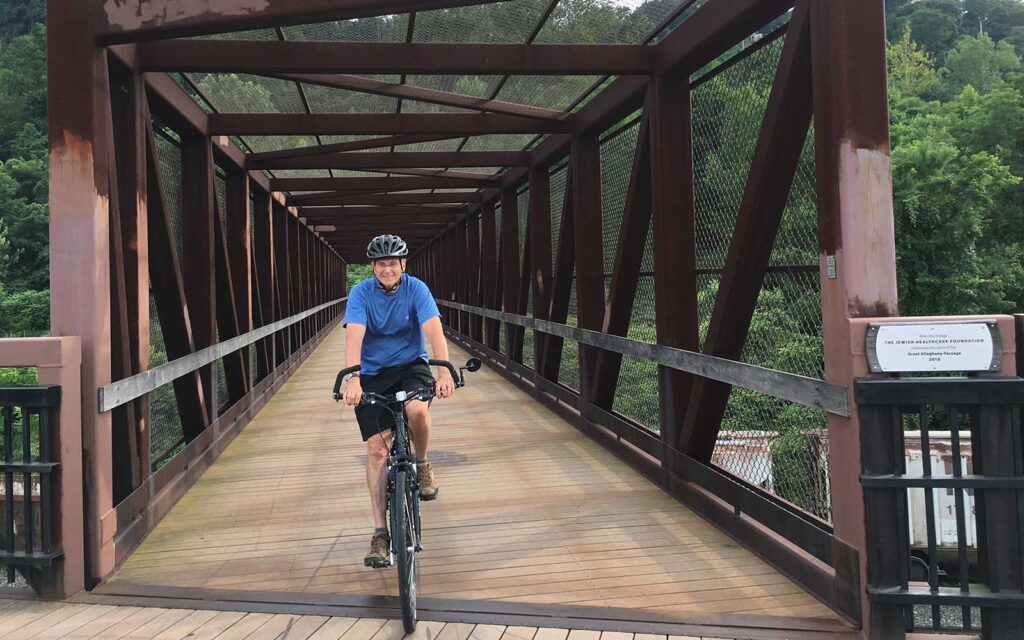
A rider crosses the Whitaker Bridge.
This storytelling project began in 2020 as an outlet for human connection during the beginning of the pandemic. Since then, nearly twenty stories of GAP trail stakeholders have been captured, along with inspiration for a new angle to share the narratives with an even broader audience.
Thanks to funding from Rivers of Steel’s Mini-Grant Program, the Laurel Highlands Conservation Landscape, and Westmoreland, Fayette, and Somerset Tourism Grants, as well as the Great Allegheny Passage Conservancy itself, these static vignettes will be turned into ninety-second videos, even as the Conservancy is working to capture additional stories.
The GAP, which is open year-round, attracts about a million and a half visits a year, with people traveling from all fifty states and over thirty-five countries to experience the trails. Perry notes that these stories will be shared “as a way to alert tourists and folks coming to bike that this is a place of rich history and beauty and risk taking and deep love among constituents, and that it’s well worth their overnight stay and their appreciation for all that’s been built ahead of them.”
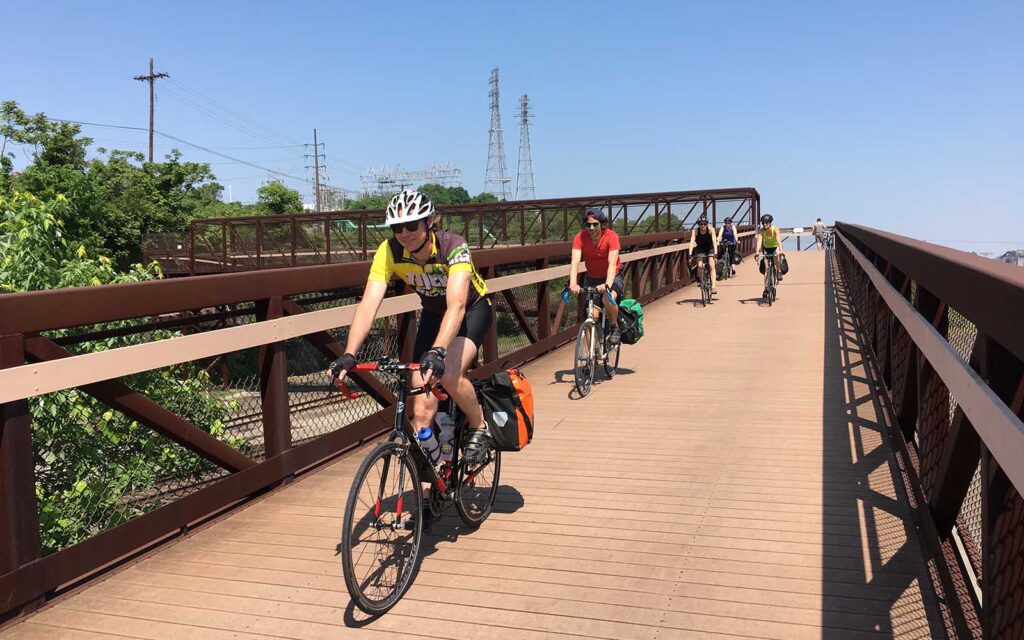
Cyclists on the Port Perry flyover.
The Living History of Western Pennsylvania’s “Industrial Might”
Along its 150-mile path, the GAP follows the paths of decommissioned railroad lines from Cumberland, Maryland continuously up to Pittsburgh.
“The GAP really traces a significant section of our country’s industrial development. The railroads themselves, both the Western Maryland Railway and the Pittsburgh and Lake Erie Railroad are the corridors on which the GAP is now built,” adds Perry. “And those railroads, in addition to carrying passengers, carried coal and coke into Pittsburgh and steel products back out in other directions. These railroads were commodities that were part of the region’s industrial heritage.”
But Perry is quick to note that the patch towns along these corridors are not a thing of the past, despite the region’s decline after the steel mills closed.
“You’re riding across from the Carrie Furnaces, and of course you’re passing by the Pump House and through the old grounds of the Homestead Steel Works. The region’s industries were dependent upon the rivers and the railroads. So you’re really riding through history in one sense, yet it is living history. People are still earning a living and supporting their families in the Mon and Yough valleys.”
In fact, thanks to the work of local businesses along the trail, tourism had a staggering impact of 121 million dollars in the five counties through which the GAP runs, according to Fourth Economy’s recent economic impact analysis, a study commissioned by the GAP Conservancy in 2020 and published in 2021.
“In Allegheny, Westmoreland, Fayette, and Somerset counties in Pennsylvania and Allegany county in Maryland, 75 million of that 121 is direct tourism spending in a very narrow band right along the Great Allegheny Passage—most of this in trail towns, including Homestead, including McKeesport and West Newton, Connellsville, and then further on out,” explains Perry.
“Entrepreneurs have started up bed and breakfasts, and distilleries and cafes, and inns and ice cream shops, and shuttle services and bike shops. And while these jobs won’t replace the industrial jobs that built those towns, it’s making a significant difference in the health and well-being of those towns along the way. So, you know, prosperity is aided by tourism, and really tourism serves local folks first. The very restaurants and bike shops and cafes that tourists are using, they need to be sustained throughout the year. And if those new businesses are focused first on local residents who frequent them and buy meals and supplies there, then they’re good for those towns, and the tourism dollar is just icing on the cake.”
Perry is hopeful that by sharing the stories of the region’s residents, greater attention will be paid to their labors of love.
“We’re hoping that tourists, as they come through, might say, ‘Hey, I recognize that volunteer or I recognize that business owner from the website—let’s spend a night at their bed and breakfast, let’s hear more of their story.’”
“Truly, the GAP is locally beloved,” continues Perry. “And so local folks are the ones working to, you know, cut grass and take care of fallen trees and take care of public art in those towns and promote walking tours and local bike routes within those towns. So local folks have the best stories. They’ve been at it the longest. And our goal with this project is to really bring the narratives and stories, at least pieces and slices anyway, to the forefront.”
Visit gaptrail.org for more information, and be sure to check out The Great Ride: Landmarks Along the Trail, a new documentary by WQED Pittsburgh featuring twenty-one historic, geologic, and human interest vignettes between Cumberland and Pittsburgh along the Great Allegheny Passage. Head to www.wqed.org/ride for details.
All images courtesy of Great Allegheny Passage Conservancy.
About the Mini-Grant Program
Rivers of Steel’s Mini-Grant Program assists heritage-related sites and organizations as well as municipalities within the Rivers of Steel National Heritage Area to develop new and innovative programs, partnerships, exhibits, tours, and other initiatives. Funded projects support heritage tourism, enhance preservation efforts, involve the stewardship of natural resources, encourage outdoor recreation, and include collaborative partnerships. Through these efforts, Rivers of Steel seeks to identify, conserve, promote, and interpret the industrial and cultural heritage that defines southwestern Pennsylvania.
The Rivers of Steel National Heritage Area is one of twelve supported by the Pennsylvania Department of Conservation and Natural Resources (DCNR). Funding is provided via DCNR’s Community Conservation Partnerships Program and the Environmental Stewardship Fund to Rivers of Steel, which administers the Mini-Grant Program. The Great Allegheny Passage Conservancy is one of eight organizations who received Mini-Grant funding through this program in 2022.
 Gita Michulka is a Pittsburgh-based marketing and communications consultant with over 15 years of experience promoting our region’s arts, recreation, and nonprofit assets.
Gita Michulka is a Pittsburgh-based marketing and communications consultant with over 15 years of experience promoting our region’s arts, recreation, and nonprofit assets.
If you’d like to know more about community projects supported by the Mini-Grant Program, read Gita’s recent article about Brownsville’s Perennial Project.

